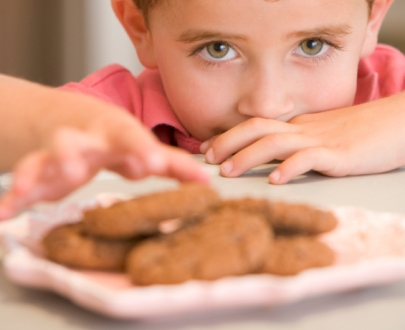 A classic experiment[1]: a young child sits at the table looking at a marshmallow. She is allowed to eat the marshmallow, but she is told that she can have an extra marshmallow if she waits a few more minutes. Will she be able to resist the temptation of this yummy treat sitting right there in front of her? Or will she wait for that extra marshmallow as a reward?
A classic experiment[1]: a young child sits at the table looking at a marshmallow. She is allowed to eat the marshmallow, but she is told that she can have an extra marshmallow if she waits a few more minutes. Will she be able to resist the temptation of this yummy treat sitting right there in front of her? Or will she wait for that extra marshmallow as a reward?
The development of self-control begins at birth and continues throughout our lives. As we get older, with the help of parents and/or caregivers, we learn how to take turns, how to pay attention in class, persist at a challenging task, and refrain from hitting another child. It takes us a long time to develop this skill. As babies we have little to no control over our behaviours and emotions but by the time we are 3 years old, we have some basic strategies in our self-control toolkit. Between the ages of 3-6 we improve our abilities to control our impulses, shift attention, and wait for rewards all requiring conscious effort. These abilities continue to develop in our childhood and adolescence. The brain regions that are involved in self-control are not mature until adolescence, which explains why developing self-control is a slow process[2].
Always being impulsive can have long lasting effects[3]: interpersonal problems, poor physical health, and psychiatric disorders. By learning self-control, children can make appropriate decisions and respond to situations in positive ways. Self-control is a skill that children need to succeed in school, socially, and emotionally.
General Strategies
The skill of self-control has been likened to a muscle. Every time we use it, it drains us a little bit. Being demanded to use it constantly will exhaust us completely and is not sustainable. Using self-control in small doses, however, helps us, over time, to build up that "muscle" so it becomes stronger and more "fit" when we need it.
It is important to select developmentally appropriate tasks when helping children foster self-control competencies. Even though self-control improves over time, there can be quite some differences in children of the same age. When helping children develop self-control skills, try setting up simple goals first, where success is expected, before moving onto the next goal. For pre-schoolers, goals might include not interrupting or not fighting on the playground. For an early elementary school student, appropriate goals might be complying with bedtime rules or showing frustration appropriately. Some general strategies that often help children learn appropriate self-control behaviours include:
-
Take a break: encourage children to take a break or ‘time in’ (such as turtle time) whenever they feel overwhelmed, angry, or frustrated. Stepping away from an upsetting situation can help a child calm down.
-
Teach and provide attention: Paying attention is a skill that can be taught. Encourage children to resist interrupting by learning how to observe others when not talking, so they can join in appropriately. Make sure to provide children with appropriate attention at times so they don’t feel ignored and therefore are more likely to interrupt.
-
Use appropriate rewards: to foster positive behaviour children need consistent positive feedback. Praise and consistent feedback can be highly rewarding for young children, as is special time with a parent. It is important to let a child know what is a desired behaviour.
-
Use activities designed to teach self-regulation: using specific activities can help parents and teachers teach (young) children skills that foster self-control. Some of these skills include dealing with “wanting something I can’t have”, understanding feelings, and controlling anger.
In the original 1972 Stanford study on delayed gratification, Dr. Walter Mischel offered marshmallows (or other treats) to children with a promise of reward if they waited a period of time (approximately 15 minutes).
Self-Control and the Developing Brain.
"An important region for self-control is the prefrontal cortex, located just behind the forehead...Neuro-imaging studies show that the prefrontal cortex develops gradually from infancy through adolesence."
Tarullo, Obradovic, & Gunnar (2009).
A gradient of childhood self-control predicts health, wealth, and public safety.
Following 1,000 children over 30 years, researchers traced the consequences of childhood self-control for health, wealth and crime.